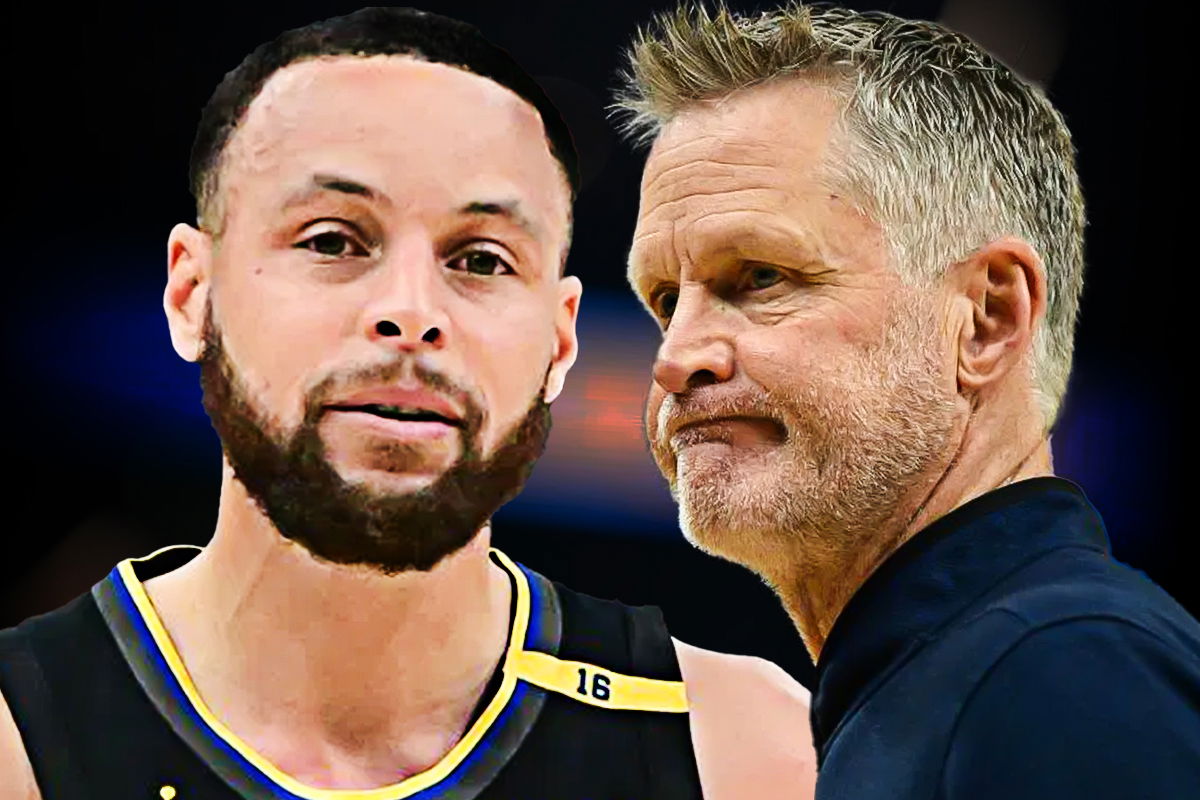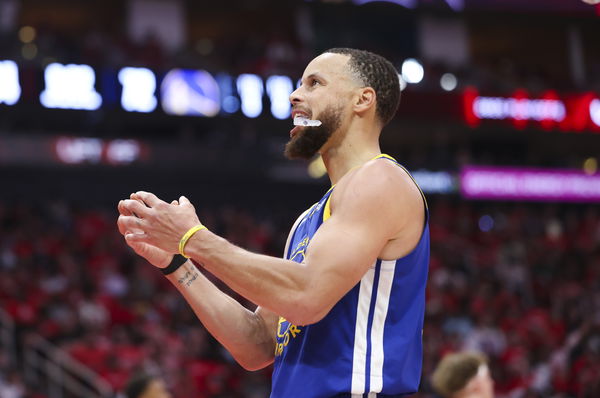
Imago
Imagn

Imago
Imagn
The Golden State Warriors didn’t just lose Game 4. They lost control of the series. And for now, they still don’t have their leader back. Down 3-1 to the Minnesota Timberwolves after a brutal 117-110 loss, the Warriors are now staring down the end of a dynasty. A 21-2 third-quarter run by Minnesota didn’t just tilt the scoreboard—it cracked open the floor beneath a franchise clinging to its championship identity. The Bay Area, so often defined by brilliance, watched helplessly as the Timberwolves lit the fuse and detonated hope in real time.
Watch What’s Trending Now!
All the while, Stephen Curry sat. Not in uniform, not on the floor, but in team-issued sweats, sidelined by a Grade 1 hamstring strain that has become the unwanted metronome of the Warriors’ playoff rhythm. It was his third consecutive absence, and his silence echoed louder than the Timberwolves’ 16 made threes.
Steve Kerr, asked postgame whether Curry could play in Game 5 if he wanted to, offered a careful deflection: “Next update is Wednesday.” That update—a re-evaluation slated for the day of Game 5—has become the most anticipated moment in Golden State. But this one carries more dread than hope. Because it’s easy to romanticize the Warriors’ dynasty. But without Curry, even nostalgia can’t score 30 points. The team has now dropped three straight games to the Timberwolves, and Monday night offered no signs of life.
ADVERTISEMENT
Asked about if Steph Curry wants to go on Wednesday, would he be overruled, Steve Kerr says next update on Steph is Wednesday.
— Ohm Youngmisuk (@NotoriousOHM) May 13, 2025
But even in absence, Curry made his presence felt. ESPN cameras captured him stepping into a huddle mid-third quarter as the Warriors began to unravel, shelling life into teammates who looked defeated before the horn. “We need to have the same energy and body language we do when we win here. Let’s go on a run here. We can do this,” he was caught saying. It was peak Curry: the voice of belief when belief is hardest to find.
Yet words don’t stop Anthony Edwards from detonating for 16 points in the third quarter alone. And motivational moments don’t erase the reality: without Curry on the floor, the Warriors aren’t just a different team. They’re an exposed one.
ADVERTISEMENT
Julius Randle continued his playoff renaissance with a game-high 31, while Jaden McDaniels chipped in a workmanlike double-double. Minnesota’s defense swarmed Golden State’s perimeter threats, choking off Buddy Hield and Brandin Podziemski like veterans toying with rookies. Jimmy Butler, once the emotional barometer of this team, scored a pedestrian 14 points, failing to replicate his Game 3 fire.
The Warriors’ only pulse came from Jonathan Kuminga, who poured in 23 off the bench—his second straight game eclipsing 20 points. He looked like a player arriving in real time. But one rising star isn’t enough to fend off a team that smells blood and has the teeth to match.
ADVERTISEMENT
This was never supposed to be a series about passing the torch. But as it stands, the Warriors aren’t holding one. They’re trying to relight it with wet matches.
And now, the hardest question looms: even if Curry is cleared to return for Game 5 in Minneapolis, should he?
ADVERTISEMENT
What happens when the safety net is gone?
The takeaway from this story isn’t just about Curry’s absence—it’s about what his absence revealed. And what it revealed is both simple and damning: This team has no margin for error when the greatest shooter of all time isn’t around to bend reality. Without Steph, Golden State is mortal. Not just beatable—predictable, stagnant, and in Game 4, borderline broken.
They were up 58–56 at halftime. A scrappy, determined effort had them controlling the glass, shooting efficiently, and forcing Minnesota into uncomfortable possessions. But when Anthony Edwards and Julius Randle surged, when the Timberwolves finally found their offensive rhythm, the Warriors had no counter. A 21–2 run in the third quarter turned a close game into a controlled demolition.

Imago
Apr 20, 2025; Houston, Texas, USA; Golden State Warriors guard Stephen Curry (30) reacts after a play during the fourth quarter against the Houston Rockets at Toyota Center. Mandatory Credit: Troy Taormina-Imagn Images
It wasn’t just that they couldn’t score—it’s that they had no idea where their next shot should come from. Jimmy Butler scored 14 quiet points on nine shots. Jonathan Kuminga led the team but couldn’t carry the creation load alone. Buddy Hield was hounded into irrelevance. Brandin Podziemski couldn’t find daylight. The entire Warriors offense was stuck in first gear.
ADVERTISEMENT
That’s where Curry’s absence stings most. His presence isn’t just about the 30-foot daggers or off-ball movement—it’s about gravity. Without Curry, defenders don’t scramble. Lanes don’t open. Mismatches don’t appear out of thin air.
So now the harsh truth sets in: Was Golden State winning all along because of Curry’s magic? Steve Kerr has long championed a philosophy rooted in ball movement, unselfishness, and trust. But when you strip that down—when you remove the magician at the center of the orchestra—what remains?
ADVERTISEMENT
You get Monday night.
You get a Warriors team that looked philosophically sound and structurally bankrupt. Kerr’s quote after the game—“We think we have the best defense in the NBA”—felt like it was from another era. They gave up 117 points, 16 threes, and couldn’t keep Anthony Edwards in front of them if their postseason lives depended on it. (They did.)
The belief that defense would buy time until Curry returned now looks painfully naive. The Timberwolves scored 102 in Game 3. Then 117 in Game 4. And every game since Curry’s 13-minute cameo in Game 1 has followed the same pattern: an early lead, a third-quarter collapse, and an exhausted team out of ideas.
ADVERTISEMENT
What this exposes is something deeper: a crisis of identity. Without Curry, Draymond Green’s playmaking loses bite. Without Curry, Jimmy Butler isn’t spacing the floor—he’s straining to rediscover rhythm. Without Curry, Kerr’s offense looks like a jazz band missing its saxophonist.
And that brings up the scariest question of all: If the Warriors are this vulnerable without one player, how real was this team’s depth to begin with? At some point, the idea that the Warriors were a “deep” team became a mirage. Yes, Kuminga has blossomed. Yes, Podziemski has been a revelation. But in the crucible of playoff basketball, where half-court execution and defensive assignments decide your fate, Golden State looks like a car with no engine once Curry is removed.
Kerr’s rotations are tighter now, but that just reveals how shallow the bench really is. Gui Santos, Moses Moody, Kevon Looney—all capable role players, but none of them spark change. None can break open a defense. This isn’t the 2015 Warriors. This is a franchise trying to squeeze one last run out of a rapidly closing window. And when Curry limps, the whole illusion wobbles. Now, the math is cruel: Only 13 teams in NBA history have ever come back from a 3–1 deficit. Curry will be re-evaluated Wednesday. Maybe he returns, and maybe he pulls off another chapter in his legend. But if he doesn’t? The Warriors are already out of gas.
ADVERTISEMENT
The dynasty isn’t dead. But it’s coughing. And if this is the end, Game 4 might be remembered not just as the night Golden State lost—it may be the night the Warriors were revealed.
ADVERTISEMENT
ADVERTISEMENT
ADVERTISEMENT

